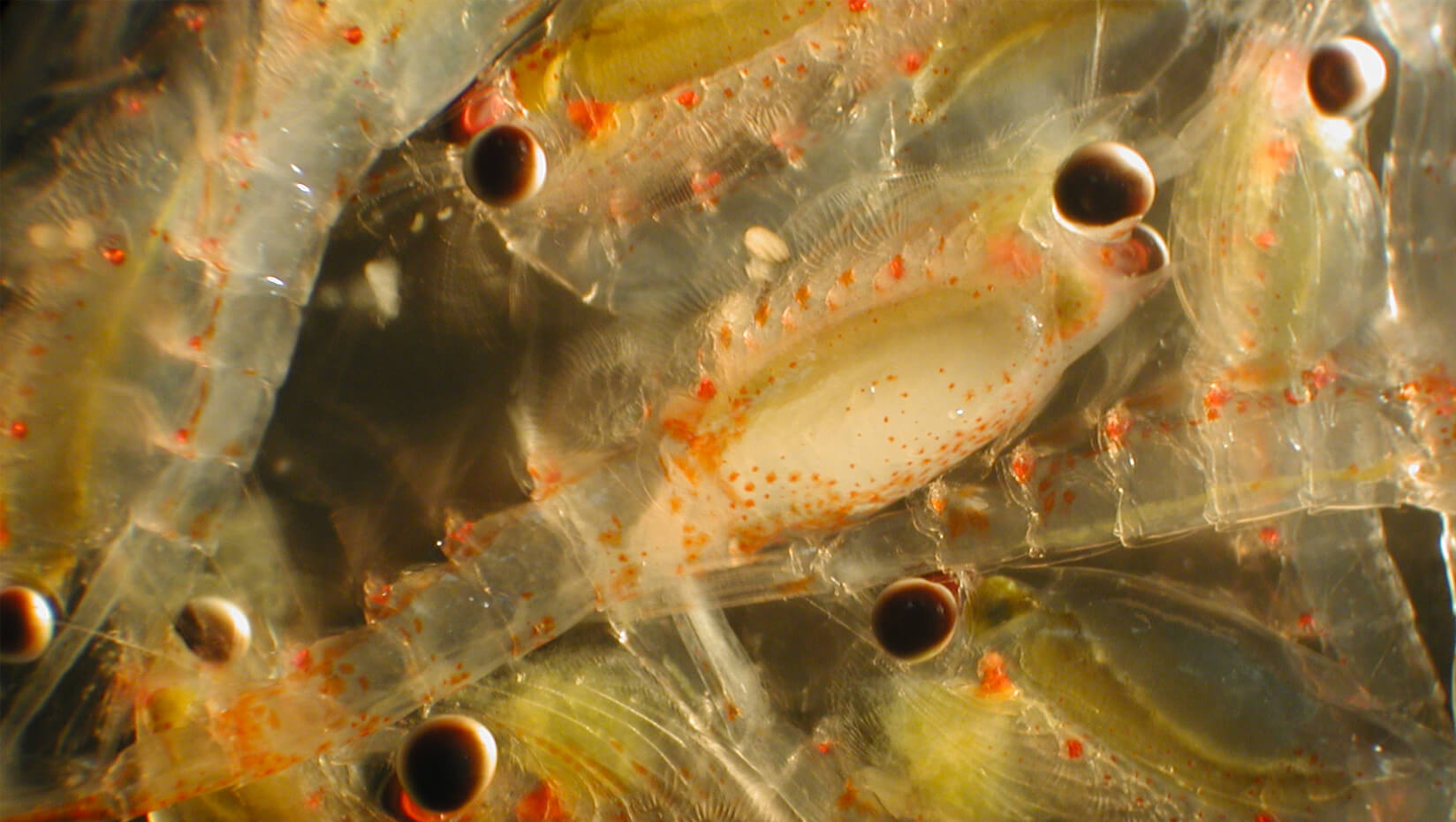
Researcher finds it takes guts to locate elusive shrimp
Rachel Lasley-Rasher wanted to learn more about highly mobile shrimp that are important food for baleen whales and commercial fish along the continental shelf from Cape Hatteras to Nova Scotia.
Because of their significance in the marine food web, she said a better understanding of shrimp migration patterns could fill knowledge gaps and help predict effects of global stressors on their locations and abundances.
The problem, said Lasley-Rasher, is that shrimp are often underestimated when sampled at large spatial scales since they’re too small to be caught in trawl nets and they easily escape from capture by plankton nets.
To solve the dilemma, the postdoctoral researcher at the University of Maine Darling Marine Center followed her gut. Or, more precisely, followed fish guts.
Since fish are adept at catching shrimp, Lasley-Rasher and colleagues analyzed the National Oceanic and Atmospheric Administration’s database that has information about gut contents of fish collected at 350–400 stations along the northeastern U.S. shelf for the last 40-plus years.
The four shrimp families (euphausiids, pandalids, mysids and crangonids) are vital food for cod, hake, pollock, flounder, skates and dogfish. And the researchers found that broad size ranges of fish, including both juveniles and adults, eat the shrimp.
The database also revealed a previously unknown northward shift of euphausiids and pandalids in March. These species, she said, are known for their vertical ocean migrations, which can span from tens of meters to thousands of meters a day. The researchers’ analysis also confirmed known and suspected patterns of late winter onshore migration by mysids and crangonids.
The method and the database provide possibilities for retrospective analysis of forage species over decades of change in Northeast fisheries and prospective analysis in the context of climate change, says Lasley-Rasher.
DMC scientists Damian Brady and Peter Jumars and Brian E. Smith of NOAA at the Northeast Fisheries Science Center in Massachusetts also took part in the research.
An article about the findings, “It takes guts to locate elusive crustacean prey,” will be featured in the Marine Ecology Progress Series journal in October.
Contact: Beth Staples, 207.581.3777
